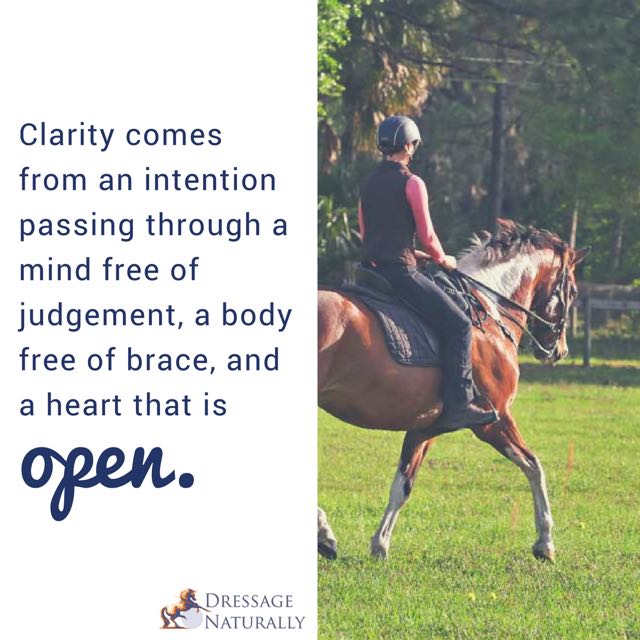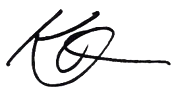As a dressage professional and 're-naturalized horseman', I understand the importance of building complex maneuvers from simple basics via clear communication. A horse who understands and is willing will be a better partner, and is easier to ride than one who feels bored, patronized, used, underappreciated, and manipulated!
I put a strong focus on the quality of the conversations that I have with my horses. Improving conversations about even the most mundane things improves communication and partnership in general. If you make the simple things excellent, the harder things become easier.
Lack of harmony is a disparity between the dream and the reality. In order to have harmony, either we have to change our dream for the moment, or we have to help the horse change his reality!

There is an exercise I do called Getting 100%. Getting 100% allows you to say "Yes!" to your horse, as opposed to saying, "Well, that's pretty good, for us," or wishing something else was happening. Often, we prevent harmony by accepting less than 100%. Some of you may be thinking, "Whoa! Karen is a perfectionist! That's way too much pressure; I can't expect my horse and myself to be perfect all the time!" Don't worry.
Getting 100% isn't about 'right', 'wrong', or demanding perfection. It's about clarity and understanding. The question needs to be understandable, reasonable and possible for your horse to answer. You both must know what it will look like when he is successful. If you have this, then why not get 100%? If it is a new exercise, get 100% of the 'first-attempt-at-learning' version of the exercise. This is different (and I believe, better) than asking for ultimate perfection and accepting a half-hearted effort, or a confused reaction. Really look at all the quality of the questions you ask your horse; from catching in the pasture, to grooming, to ground work, to riding. Then look at the quality of the answer (understanding, mental/physical engagement). You may be surprised at what you find.
Horses really do want to understand what we are asking them. They want us to be in the calm, confident state that occurs when we have harmony between our visualization and our reality. Getting 100% is unmistakable. Ask yourself, "did I get 100%?" if the answer is not an immediate "Yes!", then it was less than 100%. Trust your instincts.
What if every conversation could be like this:
(Human): "Would you ______?"
(Horse): "Yes! Did I do it enough?"
(Human): "Yes!"
As opposed to:
(Human): "Do this."
(Horse): "What?"
(Human): "THIS!"
(Horse): "You mean something sort of like this?"
(Human) "Kind of"
(Horse): "Well, do you want me to or not?"
(Human): "Well, whatever, that's pretty good, I guess, for us."
The key is to visualize what you are asking your horse. Know what success will look like. If they don't match your picture, get curious!
- Make yourself clearer
- Change how you are asking to better allow it.
- Thank them for every effort, but let them know that you want it better next time: ("Thank you so much for that 40%, let's try this again!" )
- Repeat, so they have a chance to be 100% successful
- Acknowledge their effort immediately.
"Let's" is significant. It's not just them. We are responsible for our role in their success. Sometimes the only thing that needs to change is us! Get curious. Don't settle for less. Be gentle with yourself if it is difficult. If you don't think you can get 100% of your picture, choose an easier picture and get 100% of that! Sometimes it means not asking for something you know you won't get!
You want to get to the "Yes Moment". You will be amazed at how much your horse will appreciate you saying "Yes! Thank you!" Riding around thinking that things aren't working feels bad, and for sure your horse feels it too. This disharmony is a major tension-creator.
Getting 100% doesn't mean it has to be difficult. Choose your picture wisely and make it appropriate for this horse at his stage in training. My picture changes from horse to horse, so my young horses can get just as many "Yes's" as my advanced horses!
If you ask your horse to move over in the grooming stall and he kicks out, then shies from an imagined smack and manages to be over where you wanted him, you got a result without quality communication, and you will find it extremely valuable to investigate. How you improve it? ... this will be the really interesting part!
How would you feel if your teacher said things like:
- "Oh, that's pretty good for you ..."
Or, if you ask if you did something right and they answered:
- "Well, sort of."
- (or worse:) "No", and then left you hanging.
You would feel terrible, confused and unappreciated. Don't let your horses feel like that. You know how good it feels when your teacher gives you an enthusiastic "YES!" at the right moment.
Before you go to your horse, take a moment to visualize even the very small moments. Think of a conversation where you ask your horse: "Would you _______?" then hear his answer. How can you increase the "Yes's" and "Thank you's" being said by you and your horse? Make a pledge to your horse to make yourself 100% clear and explore how to set him up to be 100% successful in a way that HE KNOWS he got it. Ask your question. Keep it positive; "I'm sorry I wasn't clear the first time, how can I help you get this?" When he gets it, say "Yes" out loud with a big exhale! Your horse will love it and you both will enjoy more results in harmony!
Thoughts? Scroll down to leave a comment!



